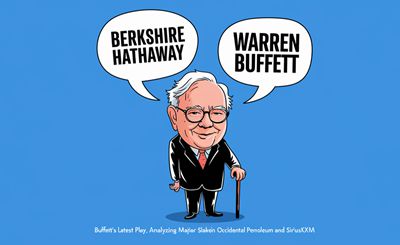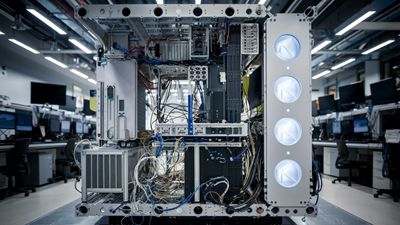S&P 500 and Nasdaq Surge as Stock Rally Continues: Key Factors Behind the Best Week of 2024
Market Performance Overview
Early September Decline
The month of September 2024 began on a sour note for the stock market, with the S&P 500 experiencing a significant decline. On September 3, the index plunged by 2.1%, influenced by weak manufacturing data, specifically a contraction in manufacturing activity indicated by the latest Purchasing Managers Index (PMI). This drop was part of a broader market downturn, with the Dow Jones Industrial Average losing 1.5% and the Nasdaq Composite plunging 3.3%.
Notable stock movements during this period included Texas-based power generator Vistra, which saw its shares plummet over 11%, and Monolithic Power Systems, which dropped 10% after a substantial previous gain. Constellation Energy shares fell 9.6%, while Molson Coors Beverage saw a gain of 5.4% after completing the sale of several craft breweries.
Mid-September Rebound
Despite the early losses, the market staged a remarkable recovery by mid-September. The S&P 500 wrapped up its best week of the year, gaining 4% over the week ending September 13, 2024. It closed 0.5% higher on Friday, September 13, and was almost back to where it started the month. The Nasdaq Composite also experienced its biggest weekly jump of the year, rising 6% for the week ending on September 13. The Dow Jones Industrial Average performed well, gaining 2.6% during the same period.
By mid-September, the S&P 500 was hovering within 0.8% of its all-time high, and the major indexes were essentially flat for the month, with each index sitting within 0.5% of where they concluded in August.
The Role of Technology Stocks
Technology Stocks Drive the Rally
A significant factor contributing to the market’s rebound has been the strong performance of technology stocks. The Nasdaq Composite, which is heavily weighted towards technology companies, saw substantial gains, driven by key players in the sector. For instance, Nvidia (NVDA) rose 1.9% following an 8% surge the previous day due to positive comments about demand from CEO Jensen Huang (Investopedia, 2024). Other major tech companies such as Apple (AAPL), Microsoft (MSFT), Amazon (AMZN), Alphabet (GOOGL), Meta Platforms (META), and Broadcom (AVGO) also saw gains.
The Technology Select Sector SPDR Fund (XLK) experienced a significant rally, surging 8.2% over the week—its best performance since November 2022. Key contributors to this rally included major technology and semiconductor stocks, with Microsoft and Nvidia rising approximately 7.2% and 15.8%, respectively. Nvidia’s boost came after CEO Jensen Huang highlighted strong demand for its Blackwell chip at a conference. Additionally, Broadcom, the fourth-largest holding in XLK, soared 22.4% during the week.
The “Magnificent 7” and Market Leadership
Large-cap technology and AI stocks, referred to as the “Magnificent 7” (which includes Apple, Microsoft, NVIDIA, Alphabet, Amazon, Meta, and Tesla), have been driving the market rally. These stocks accounted for 59.5% of the S&P 500’s gains in the first half of the year, with the S&P up 14.5% and the Nasdaq up 18.1%. In contrast, small-cap stocks, represented by the Russell 2000, only gained 1.02%, while mid-caps gained 5.34%.
Historically, the fourth quarter is the best quarter for stocks, with the S&P having increased more than 4% since 1950 and up 80% of the time during this period. September, typically a tough month for stocks, has an average loss of only 1.2%. The market is believed to be entering a new phase of breadth expansion, where greater participation from small and mid-cap stocks is expected, alongside continued strength in tech.
Federal Reserve and Interest Rate Expectations
Anticipated Rate Cuts
A key driver of the recent market rally has been the rising expectations that the Federal Reserve will start cutting interest rates next week. The odds of a 50 basis point interest rate cut by the Federal Reserve rose from 28% to 49% on Friday, September 13. Market optimism was fueled by expectations that the Federal Reserve would cut interest rates, with a 45% chance priced in for a half-percentage point cut at their upcoming meeting.
The impending Federal Reserve interest rate cuts, expected to begin at the September 18 meeting, are anticipated to have a positive impact on the stock market. Historical data from the last nine Fed easing cycles since 1974 suggests that stocks have increased in value approximately two-thirds of the time one year after rate cuts commence. Specifically, the median return on the S&P 500 in the year following the first rate cut is 10.8%, with a six-month median return of 9.1%.
Historical Impact of Rate Cuts
The impact of Federal Reserve interest rate cuts on the stock market is generally positive. Research indicates that U.S. stocks average an 11% return after factoring in inflation one year following a Fed rate cut. If the cut occurs without a recession, the average return increases to 17%. Even during a recession, stocks typically still rise by 8%.
The analysis from Hartford Funds, which reviewed 22 instances of rate cuts from 1929 to 2019, found that stocks tend to outperform other asset classes in these scenarios. For instance, returns from government bonds were only 5% higher after a year, while corporate bonds saw a 6% increase, and cash had a modest rise of 2%.
Historical examples highlight significant gains: following the June 1995 rate cut, stocks rose by 23%, and after the September 1998 cut, they increased by 25%. The report emphasizes that lower interest rates make safe investments like cash and fixed income less attractive, while they facilitate borrowing and expansion for companies, which can boost corporate earnings and stock prices.
Broader Economic Context
Economic Indicators and Corporate Earnings
The broader economic context also plays a crucial role in shaping market performance. Despite recent market pullbacks due to growth concerns, positive indicators include earnings growth and improving economic indicators. Earnings are currently positive and accelerating, which is a strong bullish signal for equities. Leading economic indicators and bank lending willingness are both improving, which bodes well for future market performance.
The current fed funds rate is between 5.25% and 5.50%, with inflation at 2.9%, down from a peak of 9.1% in 2022. Historical analysis indicates that when the starting point of short-term interest rates is higher than inflation, the following year’s market returns tend to be positive.
Market Sentiment and Investor Behavior
Investor sentiment is shaped by upcoming economic reports, including the consumer price index and producer price index, which are critical as the Federal Reserve is widely expected to announce interest rate cuts at its upcoming meeting on September 17-18. Notably, Oracle’s shares surged over 11% after reporting strong fiscal first-quarter results, with adjusted earnings of $1.39 per share on revenue of $13.31 billion, surpassing analyst expectations.
Overall, the market is experiencing volatility as it reacts to economic indicators and corporate earnings, with the S&P 500 down approximately 3% in September, contrasting with the Russell 2000’s sharper decline.
Conclusion
In conclusion, the stock market’s performance in September 2024 has been characterized by significant volatility, with dramatic shifts in investor sentiment. After recording the biggest losses of the year in the first week of the month, the market has rebounded impressively, driven by solid gains in technology stocks and rising expectations that the Federal Reserve will start cutting interest rates next week. The S&P 500, Nasdaq Composite, and Dow Jones Industrial Average have all experienced substantial gains, with the major indexes almost back to where they started the month.
The strong performance of technology stocks, particularly the “Magnificent 7,” has played a crucial role in driving the market rally. Additionally, the anticipation of Federal Reserve interest rate cuts has fueled market optimism, with historical data suggesting that such cuts are generally associated with positive outcomes for the stock market.
As the market continues to react to economic indicators and corporate earnings, investor sentiment remains cautiously optimistic. The broader economic context, including positive earnings growth and improving economic indicators, further supports the potential for continued market gains. Overall, the combination of strong technology stock performance and anticipated Federal Reserve actions suggests a favorable outlook for the stock market in the coming months.


